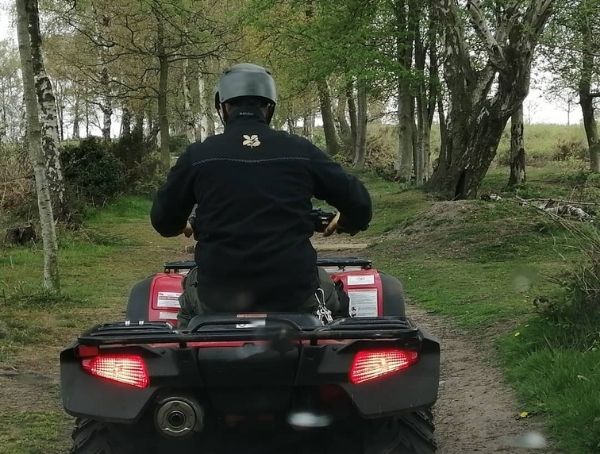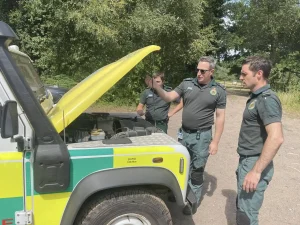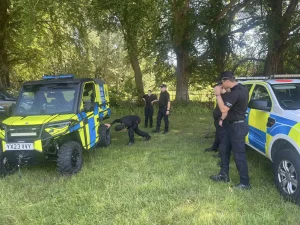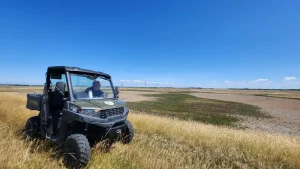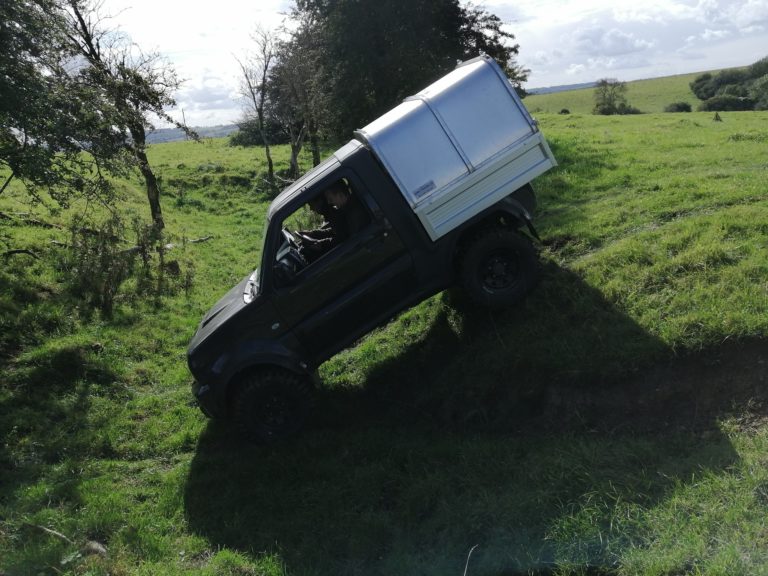From November 2023 it will become law, that anyone operating an ATV for work purposes will have to undertake accredited training. They will also have to wear a helmet.
Royal Agriculture University.
A Guide on the correct and safe use of Quad Bike and UTVs.
According to the Health and Safety Executive (HSE), fatal injuries in agriculture are disproportionate to the number of people working within the industry. On average almost one person every week is killed as a direct result of agricultural work. This has been a consistent statistic for the last 10 years and doesn’t seem to be improving.
The major hazards for farmers and forestry workers come from chemicals, livestock, working at heights or lone working, and the use of machinery and vehicles. The most common cause of death in agriculture is being hit by a moving vehicle or overturning vehicles. Sadly, a 21 year old woman recently lost her life after coming off her quad bike.
Not only are these statistics shocking, the cost to the UK equates to around £190 Million each year. With reputations for dangerous working conditions it’s no wonder farming and forestry struggle to attract and retain young talent. So what can we do about it?
At Beyond Driving we’re on mission to educate operators of specialist and off road vehicles. We believe that safety is paramount and should be accessible to everyone. With this in mind, we’ve put together a guide to using ATVs in farming and forestry. It includes essential hints and tips for keeping safe, as well as vital training that can ensure you – as an employer – are protected if your staff get hurt at work.
What is an ATV?
ATV stands for All-Terrain Vehicles and there are two main types which are commonly used in farming and forestry.
1. A sit-astride ATV is a 4 wheel vehicle with a singular central seat. They have low pressured tyres and handlebars for controlling. These are for single riders (no passengers) and are commonly referred to as quad bikes.
2. Side by Side ATV or Sit in ATVs. As you’ve probably guessed, these vehicles allow the driver and passenger to sit in the same vehicle. Most side-by-side vehicles are capable of carrying two occupants but some larger vehicles are equipped with a second row of seats at the rear. These are typically 4 wheeled vehicles (some have 6). These vehicles are commonly referred to as Utility Vehicles (UTVs) or Rough Terrain Utility vehicles (RTVs)
Both types of All Terrain Vehicles are fitted with a tow hitch allowing them to tow a trailer or trailed appliance and equipment.
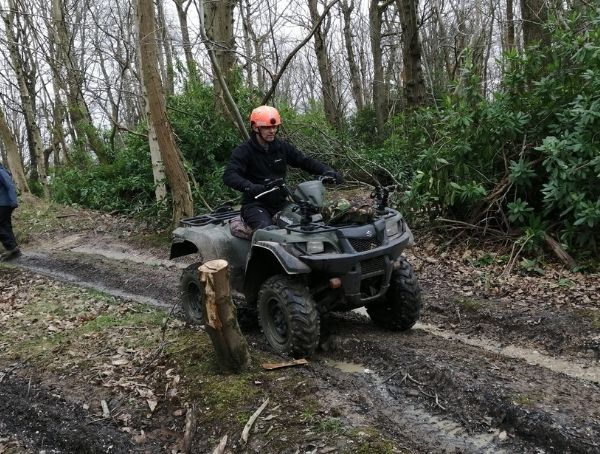
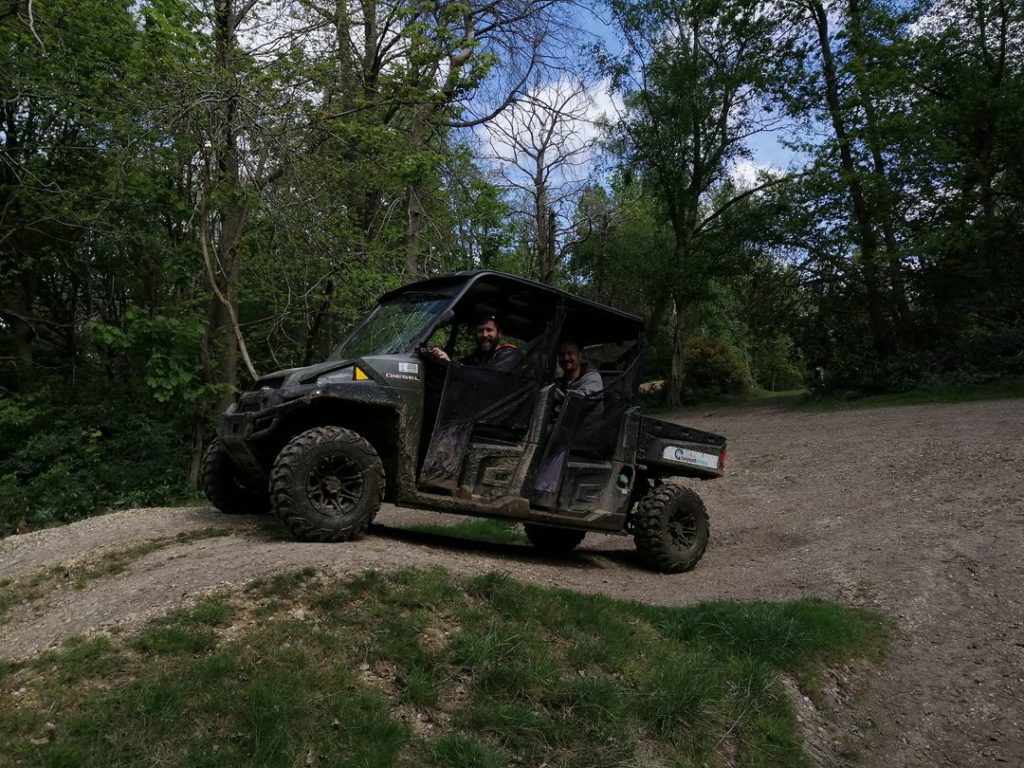
Why are ATVs used in agriculture and forestry?
Both types of ATVs are commonly used in agriculture and forestry because they are designed to cope with a wide variety of terrains. Not only are they quick and nimble but they’re great on steep inclines and slopes, and can cope in most off road conditions.
ATVs are useful in farming and forestry because they can easily be used to get around, navigate rough terrain, gather livestock, pull trailers, carry equipment and haul small loads.
What are the hazards of using ATVs in Farming and Forestry?
If used carelessly ATVs and quad bikes can become unstable and topple over. This generally happens when the rider is unaware of the vehicle’s capabilities or the rider is unable to detect when the vehicle is being pushed to its limits. Unfortunately, injuries and fatalities on farms and in forestry are increasing. Some of major incidents result from:
- Loss of control
- Rollovers
- Operators being thrown from the vehicle
- Collisions with free or other obstacles
- Operators not wearing helmets
- Inexperience
Do you need a licence to use an ATV?
You don’t need a driver’s licence to ride a quad bike off road, or for agricultural or forestry use. However, if you need to ride your ATV on the road you will need a full car licence and ensure that you adhere to the following rules as defined by Gov.uk:
- Quads for road use must meet road safety standards. Your manufacturer will be able to tell you if your quad bike has been approved for road use
- Quad bikes for road use must be registered with the DVLA and have a front and rear number plate
- If you’ve not registered your vehicle as an agricultural vehicle it will need an annual MOT if it’s more than 3 years old.
- You’ll need at least third party insurance
- You may only carry passengers if your bike has been designed to do so
If you’re only using your quad bike for agricultural, horticultural or forestry work you should register it as a light agricultural vehicle. These can be used on the road if licenced for road use and are insured. You don’t need to tax your quad and most agricultural vehicles are not permitted to carry passengers.
How to safely Use and reduce risks on a Quad bike ATV
1. Wear PPE
Riders should always wear appropriate clothing when operating these vehicles. Be sure to wear clothing that can adequately protect against serious scrapes and bruising. Farmers and forestry workers should also consider wearing protective face shields, goggles, appropriate boots and shoes, gloves and protection against pesticide application.
2. Always wear a helmet
You may be surprised to learn that you are not required by law to wear a crash helmet in England, Scotland and Wales. However, riding a quad bike in Northern Ireland without a helmet will cost you up to £500 if you get caught. Although it isn’t law, most quad bike fatalities are caused by head injuries. And in most cases a helmet would have prevented serious injury. Always, always wear a helmet when operating ATVs.
3. Carry out maintenance checks
Safety and maintenance checks should be carried out regularly. The main things to check before any trip are brakes, throttle and tire pressure. Tyre pressure on ATVs are typically low, around 2-7 psi. Understand how the difference in tyre pressure affects the handling of your vehicle.
In farming and forestry brakes can have a relatively short lifespan. Make sure your brakes are cleaned and working correctly before setting off, and adjust according to manufacturer’s guidelines.
4. Secure your loads
When carrying loads make sure that loads are secure on racks. Do not overload the vehicle and always ensure that the vehicle is balanced. Follow the manufacturer’s loading limitations.
5. Know what you’re driving
Make sure that you are familiar with the vehicle’s controls. Read through the manufacturers manual so you know how to properly operate your machine.
6. Plan your route
While Quad Bike ATVs are capable of travelling over rough terrains it’s important to avoid unnecessary risks. Plan your route carefully by walking it first and look out for hazards, obstructions and obstacles. If your planned route isn’t tenable then consider alternative routes. This is particularly important in bad weather conditions where the ground has become slippery or boggy. Once you’ve planned your route, stick to it as much as possible.
7. Tell people your route or where you’re working (avoid working alone)
Before setting off make sure you tell people where you are heading and what route you’re taking. Always carry a mobile so that you can call for help if you get into trouble.
8. Carrying Passengers
Most quad bikes aren’t designed to carry passengers. You may only take passengers if your quad is designed to do so. Only if there is a second seat and foot pegs it is safe to carry passengers.
9. Take extra care with towing trailers
When using trailers or towing mowers you should always be aware of your surroundings. You should be able to factor the vehicle’s towing capabilities and understand that ATVs can become unstable when towing with an increased risk of ‘jack-knifing’. Learn how to brake at different speeds when towing. This is important because when towing attachments heavy loads can drastically affect braking ability.
Consider a trailer training course which is designed specifically for your industry and vehicle type. At Beyond Driving all of our courses are tailored to your usage needs and delivered on site (or at one of our dedicated training centres) so that you can train in your everyday environment and gain experience of daily working scenarios.
10. Get proper training
Consider a trailer training course which is designed specifically for your industry and vehicle type. At Beyond Driving all of our courses are tailored to your usage needs and delivered on site (or at one of our dedicated training centres) so that you can train in your everyday environment and gain experience of daily working scenarios.
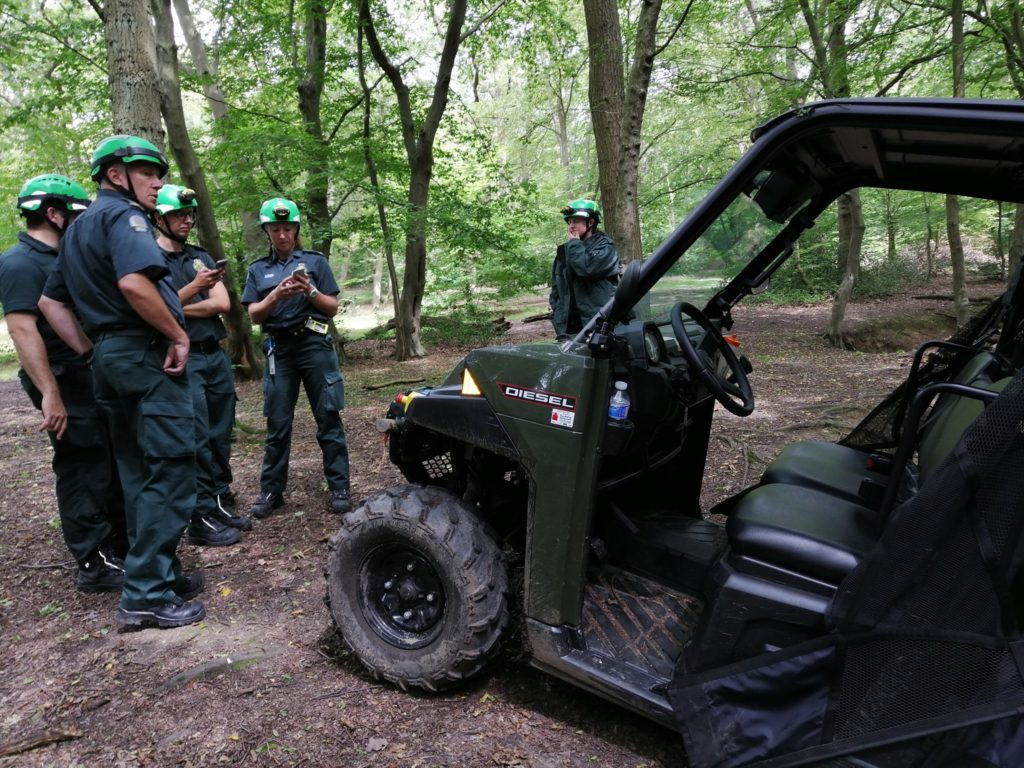
11. Know the Law
As a quad bike rider or operator it is your responsibility to know what the laws are. It is illegal to operate a quad bike under the age of 13. Over 13s are only permitted to drive ATVs of an appropriate size and power. Ensure that your vehicle is road legal. If you’re an employer or are self employed then know that you have a legal obligation to provide certified quad and ATV training to your employees.
Your obligations as an employer or self employed farmer or forestry worker.
If your workers have access to ATVs or are required to operate them at your place of work then you have a legal obligation to look after them. You must remember that while individual laws exist there are other employment and safety regulations specifically designed to protect workers that you should be aware of and adhere to.
While there is no law outside of Northern Ireland to wear a Helmet while operating ATVs, working regulations such as the Regulation 4(1) of The Personal Protective Equipment at Work Regulations 1992 requires every employer to provide adequate personal protective equipment to those exposed to risks to their health and safety. This also applies to the self-employed.
Additionally, Regulation 3(1) of the Management of Health and Safety at Work Regulation requires all employers to make a suitable and sufficient assessment of risks that they are exposed to while undertaking work duties.
More importantly, under PUWER regulations employers are legally required to provide adequate training and refresher courses to their employees. Training should cover the use of vehicles and vehicle maintenance to ensure the safety of the rider/operator.
Remember that it is your responsibility to keep your staff safe. A lot of the time accidents can be mitigated through training and ongoing risk assessments, but without these your company may have to pay compensation. Worse still, you could be charged with corporate manslaughter.
Top Tips for the safe use of ATVs in Farming and Forestry
- ATVs are not toys. Just because you don’t need a licence should not give you a false sense of security about these machines. ATVs can cover a lot of rough terrain quickly. Always use them responsibly.
- Size matters. Children over 6 years of age should not operate an adult size ATV which typically have an engine larger than 90cc.
- Remember that ATVs are less visible in large open spaces. Make yourself more visible by using reflectors, adequate lights and visible flags.
- Never ride on the roads unless your vehicle has been certified as road legal. Hard surfaces increase the risk of overturning.
- Never operate an ATV or Quad bike under the influence of drugs and alcohol.
- Provide regular specialist off road training and risk assessments for your staff.
Essential training for Using ATVs in Farming and Forestry
Sit-in (UTVs) and sit-astride quad bikes (ATVs) are awesome machines for farming and forestry. As fairly agile machines they help us cover rough terrain quickly, carry loads and tow equipment with ease. On the flip side, ATVs are the number cause of injury and death within agriculture and fatalities within the sector are on the rise.
As an employer (including self employed) you have a duty to ensure that your staff operate machine and vehicles safety and correctly. Follow our guide above to familiarise yourself with some of the main hazards of operating ATVs. Be sure to follow the precautions we’ve outlined and take on board our top tips for vehicle safety.
Training for using ATV in farming and forestry is essential by law. So make sure you choose a provider with specialist vehicle instructors that are ideally accredited or certified.
Here at Beyond Driving we like to deliver training on site, at your working location. This gives drivers, riders and operators ‘real life’ practical practice and learning. It means that they encounter the same surroundings, hazards, and landmarks that they would during their professional day-to-day life. However, when we book with us we will build a RoSPA approved training course around you. We tailor our trailer handling, quad bike and ATV training to cover specific scenarios, situations and equipment to fulfil any PUWER and Health and Safety requirements.

